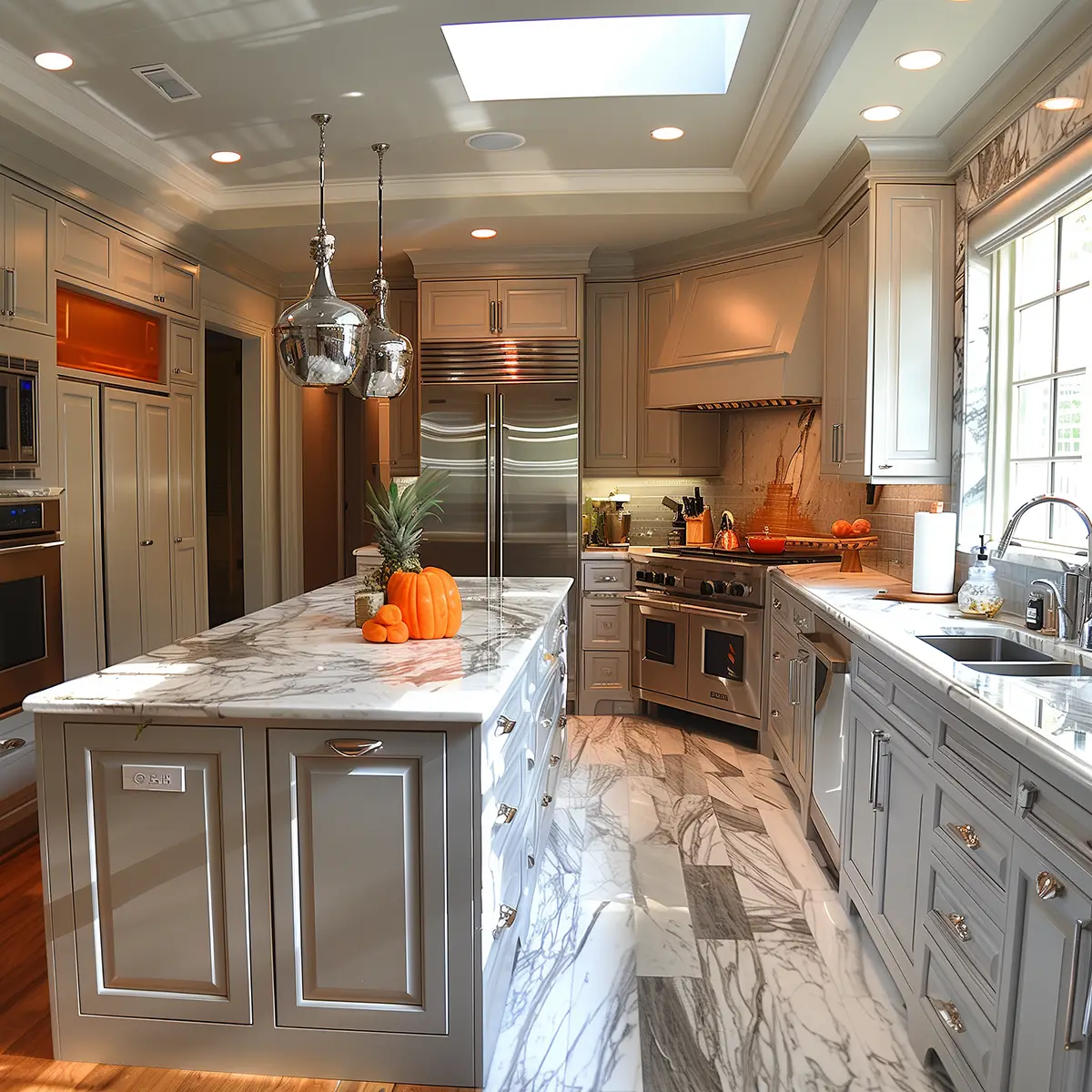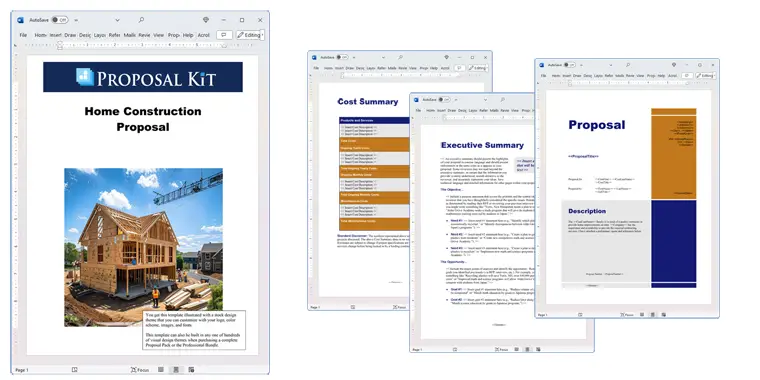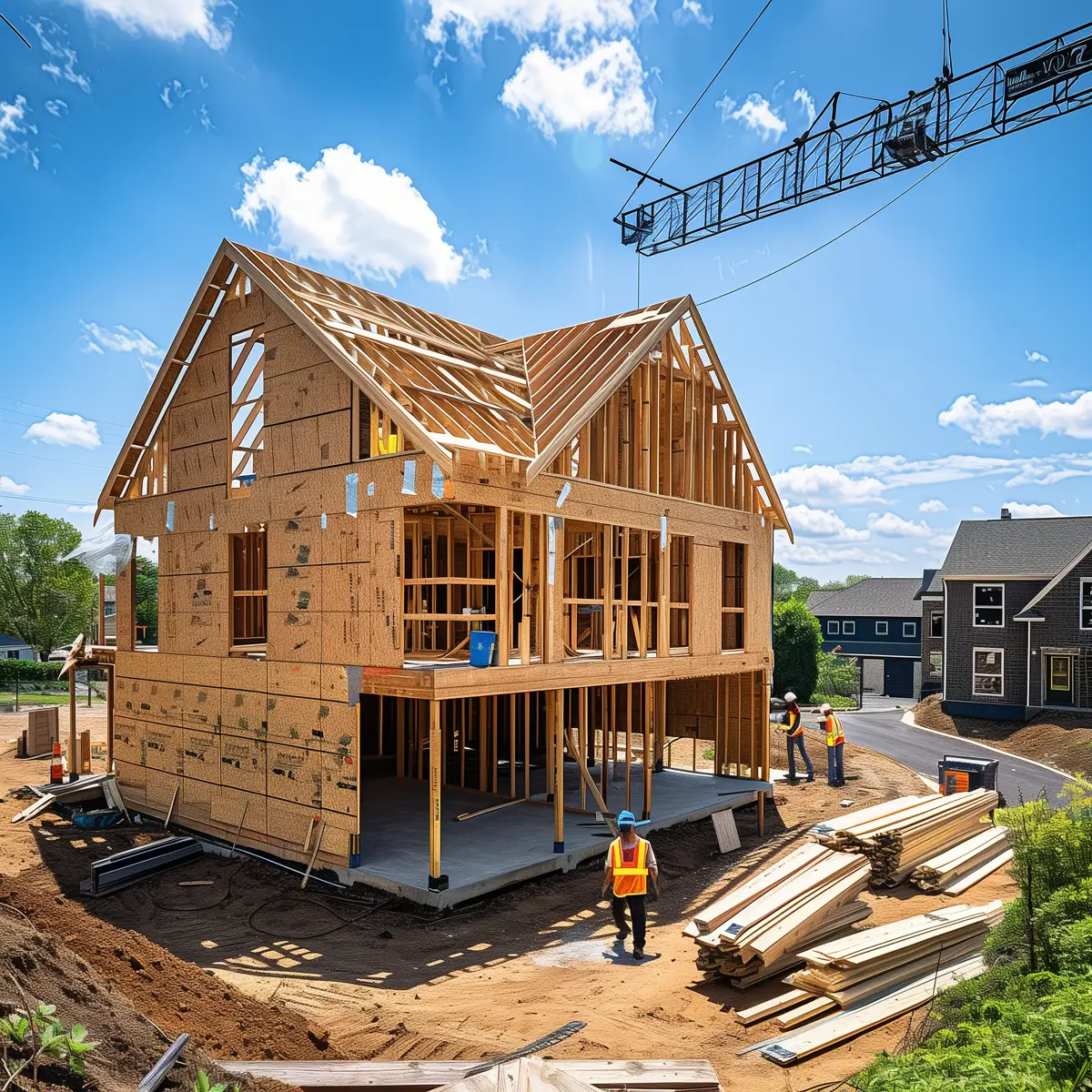How to write your Home Construction Proposal
We include this 24 page layout with every Proposal Pack. If you want this template to have a different visual design theme than the one illustrated here, purchase any Proposal Pack design and create this template using the purchased design theme. This template is included in every Proposal Pack. If you get a Proposal Pack or the Professional Bundle, you can also make any variation of this template with different chapters to suit your needs.
We typically include more chapters in the templates than most people will need to give everyone more variety in the chapters they may need. You can trim down a long template by removing pages you do not need or combining multiple chapter topics into one page.
 DOWNLOADABLE, ONE-TIME COST, NO SUBSCRIPTION FEES
DOWNLOADABLE, ONE-TIME COST, NO SUBSCRIPTION FEES If you need this template on DVD media order from our Amazon shop.
If you need this template on DVD media order from our Amazon shop.
You can also create countless variations of this document to suit your needs using the included library of 2200+ chapters if ordering a Proposal Pack or Pro Bundle.
 What Our Clients Say
What Our Clients SayThe Proposal Pack Wizard was a great add on for Proposal Kit Professional software. It has been and great asset in help us to develop proposals and contract for our IT and Web Services business."
K & K Houston LLC
Related Article
Related Video
Related Templates
- Construction Project Proposal (Short)
- Contractor Bath and Kitchen Remodel Services Proposal
- Woodworking Contractor Services Proposal
- Heating and Air Conditioning Proposal
- Lighting Contractor Product and Service Sales Proposal
- Masonry Contractor Proposal
- Contractor Services Proposal
- Flooring Contractor Proposal
- Painting Contractor Proposal
- Siding Contractor Proposal
- Glass and Glazing Contractor Proposal
- Contractor Home Remodel Services Proposal
- Roofing Contractor Proposal
- Plumber Services Proposal
- Electrical Contractor Proposal
- Commercial HVAC Proposal Template
- Energy Efficiency Grant Project Proposal
- Home Audio and Theater Installation Proposal
- Architecture Firm Proposal Template
- Custom Home Building Proposal
- HVAC Proposal Template
- Energy Efficiency Proposal
- Architectural Design Proposal
- 3D Printed Building Construction Proposal
- Electrical Business Proposal Template
- Architectural Design Proposal Template
What's the best way to write your home construction proposal?
A proven approach for creating a winning home construction proposal is using the Proposal Kit template and software package. This system simplifies the proposal writing process and incorporates a comprehensive line item quoting database for detailed cost summaries, quotes, estimates, budgets, and other financial documents important for construction projects.
Are you currently tasked with writing a proposal for a home construction project, or do you find yourself in a similar scenario? If so, the Proposal Kit is the right tool for the job.
What Types of Projects Are Home Construction Proposals Written For?
Home construction projects can vary widely, requiring a unique approach and detailed planning. Here are some examples of projects that detailed proposals are written for:
- Custom home building
- Home additions
- Kitchen remodeling
- Bathroom remodeling
- Roof replacement
- Landscaping and outdoor spaces
- Deck or patio construction
- Home extensions
- Basement finishing
- Energy-efficient upgrades
- Home automation systems
- Swimming pool installation
- Exterior painting
- Window replacement
- Door upgrades
- Solar panel installations
- Security system installations
- Fire and safety upgrades
- Flooring installations
- Smart home integration
Chapters this template is built with
No universal template fits all home construction projects due to their diverse nature. However, the Proposal Kit provides a starting point with its extensive library of customizable chapters and ready-made layouts. Here's how you can use some of these chapters specifically for a home construction proposal:
Cover Letter
Introduce your construction company and express your enthusiasm for the potential project. Highlight your qualifications and experience in handling similar projects. Mention any preliminary meetings or discussions with the client and demonstrate your understanding of their vision and needs.
What You Can Expect
Outline the process and what the client can anticipate during the construction phase. Detail each step from initial consultation to final inspection, including timelines, key milestones, and communication protocols. This section helps manage client expectations and demonstrates your organized approach.
Client Summary
Detail information about the client to tailor the proposal specifically to their needs. Include the client's objectives, specific requirements, and any unique considerations. This shows that you have paid attention to the client's wishes and are prepared to deliver a personalized solution.
Master Plan
Present the overarching plan for the construction project. This should include a high-level view of the project scope, key objectives, significant deliverables, and critical success factors. The Master Plan provides a roadmap for the entire project, helping the client understand the big picture.
Site Preparation
Discuss how you will prepare the construction site safely and efficiently. Mention any preliminary work such as land clearing, excavation, leveling, and installing temporary utilities. Discuss measures to protect existing structures and preserve site integrity.
Production Schedule
Provide a detailed timeline for the stages of the construction project. Break down the project into phases with start and end dates for each task. Include dependencies and critical path activities to illustrate how you will maintain project momentum and meet deadlines.
Building Codes
Explain how the project will comply with local building codes and regulations. Detail any standards or certifications your team will adhere to, ensuring safety and legal compliance. Mention any past experiences dealing with local authorities and obtaining necessary approvals.
Exterior
Describe the materials and techniques to be used for the exterior of the building. Include information on siding, roofing, windows, and doors. Explain how these choices blend with the surrounding environment and meet the client's aesthetic preferences.
Samples
Include samples or images of materials, finishes, and artistry to expect. Show examples of different textures, colors, and design elements. This can also include photos of previous projects to give the client a tangible sense of what the finished product will look like.
Architecture
Detail the architectural designs and plans. Include blueprints, sketches, and 3D renderings if available. Explain the architectural style and how it meets both functional and aesthetic goals. Highlight any innovative or unique design features.
Controls
Outline the management controls that will be in place to ensure project success. Discuss project management methodologies, quality assurance processes, and risk management strategies. Highlight any software tools or systems used to track progress and manage resources.
Lighting
Discuss the lighting plans for both the construction and the finished building. Include details on natural and artificial lighting solutions, energy efficiency considerations, and intelligent lighting technologies. Explain how lighting will enhance the overall living experience.
Interior
Describe the interiors, including room layouts, materials, and unique features. Cover flooring, walls, ceilings, and fixtures. Explain how your designs optimize space, functionality, and comfort. Include any custom features or innovative solutions tailored to the client's needs.
Permits and Licenses
List the necessary permits and licenses and how they will be obtained. Explain the process for securing these documents and your experience dealing with local authorities. Mention any specific challenges and your strategies for overcoming them.
Electrical
Detail the electrical installations and infrastructure. Include plans for wiring, outlets, lighting fixtures, and any smart home technologies. Discuss compliance with safety standards and energy efficiency measures.
Plumbing
Explain the plumbing systems that will be installed. Cover water supply, drainage, and sewage systems. Highlight any eco-friendly solutions such as water-saving fixtures or rainwater harvesting systems.
Roofing
Describe the roofing materials and construction techniques. Explain why these materials were chosen based on durability, weather resistance, and aesthetic appeal. Mention any additional features such as insulation or solar panels.
Landscaping
Outline plans for landscaping and external works. Include details on plant selections, garden layouts, irrigation systems, and hardscaping elements like pathways and patios. Explain how your design will enhance the property's curb appeal and functionality.
Inspection
Detail the inspection phases to ensure quality and compliance. Explain the various checkpoints throughout the project, from the initial site inspection to the final walkthrough. Discuss the role of third-party inspectors and your commitment to meeting all regulatory requirements.
Company History
Provide background about your construction company to build credibility. Include information on your founding, mission, key personnel, and past projects. Highlight any awards, certifications, or memberships in professional organizations.
Testimonials
Include client testimonials to reinforce the trust and quality of your work. Share positive feedback and success stories from previous clients. This can help build credibility and assure the client of your reliability and expertise.
Use cases for this template
Seamlessly Expanding Living Space
Tom works for DreamBuild Homes and was recently approached by a client looking to expand their existing home to accommodate their growing family. The client wanted the new addition to seamlessly integrate with the current structure, ensuring consistency in aesthetic and functional aspects.
Using the Proposal Kit, Tom quickly assembled a customized proposal highlighting DreamBuild Homes' expertise in seamlessly blending new structures with existing homes. The detailed proposal included a master plan, site preparation details, and a production schedule, showcasing the company's meticulous planning and execution capabilities.
The client was impressed by the professionalism and thoroughness of the proposal, leading to a successful bid and contract for DreamBuild Homes.
Meeting Tight Deadlines with Advanced Tools
Sara, an employee at Modern Spaces Inc., was given a tight deadline to submit a proposal for a kitchen remodeling project. The client wanted a modern, functional kitchen with state-of-the-art appliances and fixtures.
With the clock ticking, Sara turned to Proposal Kit to help her create a professional and comprehensive proposal. Additionally, she leveraged an AI writing tool to assist in generating content for specific chapters, such as the design elements and material specifications. By prompting the AI to analyze the company's website, Sara was able to include detailed descriptions and high-quality images of past kitchen remodeling projects.
This efficient combination of tools allowed Sara to meet the submission deadline comfortably with a polished and persuasive proposal that impressed the client and secured the project for Modern Spaces Inc.
Comprehensive RFP for Community Safety Upgrades
David, a director at Community First Non-Profit, was tasked with drafting a Request for Proposal (RFP) for a community center's safety upgrades. The center needed extensive work, including fire and safety upgrades, electrical installations, and security system enhancements.
David needed to communicate the non-profit's requirements to potential contractors to ensure they received accurate and competitive bids. David created a comprehensive RFP using the Proposal Kit with a detailed breakdown of the project requirements, timelines, and budget estimates. The proposal also highlighted the community center's significance and the impact of the safety upgrades on the local community.
The clear and well-organized RFP attracted several high-quality bids, enabling Community First Non-Profit to select the best contractor for the project and ensuring the safety and well-being of the community center's users.
Conclusions and Recommendations
From the initial stages of understanding how to tailor a home construction proposal to using Proposal Kit's templates and line item quoting system for specific construction projects, Proposal Kit streamlines and enhances the proposal writing process.
Also Known As
This template may also be referred to in different ways or be used in more specialized situations, such as:
- Building Project Bid
- Residential Construction Submission
- Home Building Quote
- House Renovation Proposal
- Home Improvement Plan
- Property Construction Offer
- Dwelling Construction Plan
- Residential Building Proposal
- Custom Home Proposal
- Home Extension Bid
Abstract
-1200.webp) Creating a home construction proposal can be a challenging task, but using Proposal Kit can streamline the process for residential and commercial construction projects. This software simplifies the proposal process, providing construction proposal templates and a comprehensive line item quoting database. These resources help generate accurate proposals, detailed cost estimates, and other important financial documents required for a successful project. Understanding the project's feasibility is critical, and a well-written construction bid proposal can attract potential clients by clearly outlining project costs, scope of work, and a detailed work schedule.
Creating a home construction proposal can be a challenging task, but using Proposal Kit can streamline the process for residential and commercial construction projects. This software simplifies the proposal process, providing construction proposal templates and a comprehensive line item quoting database. These resources help generate accurate proposals, detailed cost estimates, and other important financial documents required for a successful project. Understanding the project's feasibility is critical, and a well-written construction bid proposal can attract potential clients by clearly outlining project costs, scope of work, and a detailed work schedule.
The proposal defines the responsibilities of construction contractors and subcontractors. It includes an executive summary, project timeline, payment schedule, and scope of the project. Proposal Kit offers related templates that address the client's project needs, helping to establish a good construction proposal that ensures clear communication and accurate information. The proposal outlines key team members' roles, project owner responsibilities, and potential delays while also providing a clear understanding of the estimated costs and payment terms.
For residential construction proposals, customizing a simple construction proposal template can address unique topics of a residential construction project, such as design preferences, building code compliance, and obtaining permits. The template can be adapted to include a detailed scope of work, project schedule, and legal documents that guarantee clarity and protect all parties involved. By incorporating past work and company profiles, building companies can highlight their reputation and unique value, encouraging potential clients to explore their services further.
 Overall, a well-written construction proposal is a formal document that bridges the gap between the client and contractor, ensuring a clear and smooth sales process. It is crucial for making money through profitable projects, maintaining the company's cash flow, and building a strong relationship with the homeowner.
Overall, a well-written construction proposal is a formal document that bridges the gap between the client and contractor, ensuring a clear and smooth sales process. It is crucial for making money through profitable projects, maintaining the company's cash flow, and building a strong relationship with the homeowner.
Proposal Kit is a proven tool for creating effective construction proposals for both residential projects and commercial projects. This proposal software aids in establishing a comprehensive document that encapsulates all the details necessary to capture a potential client's attention. When you write a construction proposal, it is vital to include a project overview, highlighting the project's objectives and main components to ensure clarity. The software allows custom home builders and contractors to write a great proposal, which includes construction proposal outlines that define specific tasks, detailed information, and the scope of the proposed construction project.
For residential construction projects, the Proposal Kit facilitates the detailed estimate process, accounting for labor costs, equipment expenses, and other relevant expenses. Including local regulations, completion dates, and warranties ensures the proposal addresses all legal contract obligations and financial topics. By providing clarity on pricing, down payment requirements, and payment schedules, the client gains a comprehensive understanding of the project's financial outline. The software also assists in creating a clear communication strategy, ensuring that all parties involved-subcontractors, clients, and contractors-agree on the project's terms and conditions.
 The use of Proposal Kit also extends to commercial projects, offering templates that cater to industry-specific needs. By incorporating the company's qualifications, portfolio, and past work, the proposal builds confidence and trust with the potential client. The inclusion of construction management practices and dispute resolution clauses showcases the company's capabilities in handling complex projects efficiently.
The use of Proposal Kit also extends to commercial projects, offering templates that cater to industry-specific needs. By incorporating the company's qualifications, portfolio, and past work, the proposal builds confidence and trust with the potential client. The inclusion of construction management practices and dispute resolution clauses showcases the company's capabilities in handling complex projects efficiently.
An important part of any construction proposal is the inclusion of a legal contract that defines the project's scope, responsibilities, and obligations. This legally binding document is crucial in minimizing risks and addressing potential disputes. The Proposal Kit ensures that all information is accurately presented, allowing clients to make informed decisions and move forward with confidence. Additionally, the software provides tools to calculate extra costs and define specific pricing strategies, ensuring transparency and honesty in all financial dealings.
By providing a detailed and organized approach to proposal writing, Proposal Kit not only enhances the speed and efficiency of the sales process but also increases the likelihood of securing more bids. This systematic approach to proposal creation is ideal for both newcomers to the industry and seasoned professionals seeking to refine their proposal presentations. Ultimately, using the benefits of Proposal Kit can result in a best-fit solution that addresses the unique needs of each project, ensuring successful completion and client satisfaction.
 In the field of construction bids, a Proposal Kit serves as an important asset for both contractors and clients, transforming the initial idea into a structured Word document that lays the foundation for successful collaboration. Its capacity to deliver a sales brochure-like presentation ensures that the proposal not only includes contact details but also engages potential clients by outlining all relevant information. The proposal's clear structure allows parties to agree on important topics such as pricing, payments, and warranty information, forming a solid agreement that defines each party's responsibilities and obligations.
In the field of construction bids, a Proposal Kit serves as an important asset for both contractors and clients, transforming the initial idea into a structured Word document that lays the foundation for successful collaboration. Its capacity to deliver a sales brochure-like presentation ensures that the proposal not only includes contact details but also engages potential clients by outlining all relevant information. The proposal's clear structure allows parties to agree on important topics such as pricing, payments, and warranty information, forming a solid agreement that defines each party's responsibilities and obligations.
When constructing a proposal, it is important to consider important topics such as the expiration date for offers and the inclusion of necessary information that might sway a potential client's decision. Proposal Kit aids in presenting a best proposal that addresses these points, while also considering the first step and beginning phases of the proposed project. Offering tips and insights, the software helps clarify the difference between standard and custom projects, ensuring that the client's needs are met.
The system is designed to be the best fit for a variety of projects, providing users with access to a wide range of templates and forms. These resources typically guide the user through the process, from research and introduction to decision-making and finalization. By laying out the course of the project in clear terms, the proposal helps to prevent misunderstandings and ensures that all parties involved conduct themselves according to established rules and industry standards.
 Subcontractors, an integral part of many construction projects, find that Proposal Kit offers value through its ability to streamline communication and planning. By incorporating relevant information and answers to frequently asked questions, the proposal often leaves little room for more questions, thus speeding up the project's progression. The inclusion of insurance details and liability clauses further reinforces the proposal's role as a protective document for both the client and the contractor.
Subcontractors, an integral part of many construction projects, find that Proposal Kit offers value through its ability to streamline communication and planning. By incorporating relevant information and answers to frequently asked questions, the proposal often leaves little room for more questions, thus speeding up the project's progression. The inclusion of insurance details and liability clauses further reinforces the proposal's role as a protective document for both the client and the contractor.
Finally, the Proposal Kit emphasizes the importance of a well-signed and legally binding document, ensuring that warranties and calculations are laid out with precision. As a result, users can confidently submit their bids, knowing that they have addressed all angles of the proposal with the comprehensive support of the Proposal Kit. This approach not only enhances the user's market presence but also ensures that each project is approached with clarity and professionalism, making it easier to transition to the next project with a well-established reputation.
Frequently Asked Questions
What are the essential components of a home construction proposal?
Start with a Cover Letter to introduce your company and express interest in the project. Include a Client Summary to demonstrate your understanding of the client's needs. A Master Plan should outline the overall approach and objectives of the project. Detailed sections on Site Preparation, Production Schedule, and specific aspects like Exterior, Interior, Electrical, and Plumbing are crucial for covering all bases. Include sections on Building Codes, Permits and Licenses, and Inspections to highlight compliance and safety measures. Finally, reinforce your proposal with a Company History and Testimonials to build credibility and trust.
How detailed should the cost estimates be in a home construction proposal?
Cost estimates in a home construction proposal should be as detailed as possible to provide transparency and build trust with your client. Break down costs into specific categories: materials, labor, permits, and potential contingencies. Use a line item quoting system to itemize each aspect of the project, providing clear and concise estimates. This level of detail helps the client understand where their money is going and minimizes the risk of misunderstandings or disputes later on.
Why is a production schedule important in a home construction proposal?
A production schedule is integral to a home construction proposal because it sets realistic timelines and expectations for the client and the construction team. It outlines each project phase, from site preparation to final inspections, including start and end dates for each task. A well-documented schedule demonstrates your organizational skills and reliability, assuring the client that you can efficiently manage and complete the project. It also serves as a reference point for tracking progress and adjusting as needed.
How can I make my construction proposal stand out from the competition?
To make your construction proposal stand out, focus on personalization, professionalism, and showcasing your expertise. Tailor the content to address the specific needs and concerns of the client. Include high-quality images and samples of materials and finishes to represent the work visually. Incorporate client testimonials and case studies from similar projects to build credibility. Ensure the proposal is well-organized, error-free, and professionally formatted. Tools like Proposal Kit can help you achieve a polished and compelling proposal.
Can the Proposal Kit help if I have no prior experience writing proposals?
Proposal Kit is designed to assist even those with no prior experience in writing proposals. The software and template library offer a step-by-step guide with pre-written sections and customizable templates. This user-friendly system simplifies the process, allowing you to create professional and comprehensive proposals easily. Additionally, the line item quoting database and extensive library of thousands of chapters ensure that you cover all necessary topics, enhancing the quality and effectiveness of your proposal.
15% Off Discount
![]() Add To Cart This Word Template Only
Add To Cart This Word Template Only
 Add To Cart Proposal Pack for Any Business
Add To Cart Proposal Pack for Any Business
 Add To Cart Proposal Kit Professional Bundle
Add To Cart Proposal Kit Professional Bundle
 4.7 stars, based on 846 reviews
4.7 stars, based on 846 reviewsProposal Kit chapters used in this template
Cover Letter, Title Page, Table of Contents, Client Summary, What You Can Expect, Master Plan, Architecture, Exterior, Interior, Lighting, Controls, Electrical, Plumbing, Roofing, Landscaping, Site Preparation, Building Codes, Production Schedule, Permits and Licenses, Inspection, Samples, Company History, Testimonials, Back Page
Included Calculator Spreadheets
These Excel calculator spreadsheets are included with this template. If you purchase a Proposal Pack or the Professional Bundle, these proposal pages are generated using an automated line-item database in the included Wizard software. The calculator spreadsheets are intended for use when purchasing only the static Word template.
You use this proposal for
- General business proposal
- Non-technical proposal
- Project pitch proposal
- Construction, contracting, building proposal
- Real estate, property proposal
How to create this template with Proposal Pack Wizard
You can create this document using any of the logo-designed Proposal Packs. Pick any Proposal Pack with a logo design theme you like best; they will all work equally well. The Proposal Pack for Any Business is the pack with no extra added logos or colors - designed to be used plain or for you to customize with your logos and graphics.
The Proposal Pack design theme you purchase will determine the visual look of this template. The screenshot above only shows the plain generic design theme. Names and stories in examples are fictional; however, the templates are from real client use cases.
We include a library of chapters to be assembled based on your needs. All proposals are different and have different needs and goals. We designed Proposal Pack so you can customize the documents to suit your needs.
You will best create this document using the Proposal Pack Wizard - Expert Edition software to select this template and build it in the Proposal Pack logo design theme of your choice along with any desired customizations (such as adding additional chapters, removing unneeded chapters, changing the order of chapters, and importing your company logo). This template outlines a proposal for the described situation. Each user is responsible for typing in the actual content of the provided pages with their information to complete the proposal. Suggestions in the abstract may include features in higher-end packages and are facilitated by the selection of chapter templates to support the narrative of each proposal, which help guide the user in filling in the details.
You create this template using the Wizard software with an entire Proposal Pack library and software. We include the Expert Edition of the software in the Proposal Kit Professional bundle. Microsoft Word for Windows is required to use the customizing software. You can also edit Word document templates in other office software such as Word for Mac. We will assist Mac users in assembling complex templates for their first project if they do not have the required platform to run the Wizard software.
You only get the single assembled Word document if purchased as a stand-alone template. The individual template products include no other templates, samples, or software.
How to Build Templates Featured on Proposal Kit Website
Many people find the Proposal Kit website after searching for a specific proposal. Once you've purchased and installed the software, how do you build that template you found in the first place? This video shows you how to build any proposal you see on the Proposal Kit website.
Key Takeaways
- The Home Construction Proposal is available as a ready-to-edit template.
- You can create unlimited custom variations of this template using a Proposal Pack or the Professional Bundle.
- Using a Proposal Pack or Professional Bundle, you can automate quotes and other financial pages with a line-item database.
- There are no ongoing subscription fees. You get lifetime unlimited use.
- We made Proposal Kit for freelancers, small businesses, and non-profits.
- Proposal Kit product content (templates, samples, software) is 100% written by humans.
 Ian Lauder has been helping businesses write their proposals and contracts for two decades. Ian is the owner and founder of Proposal Kit, one of the original sources of business proposal and contract software products started in 1997.
Ian Lauder has been helping businesses write their proposals and contracts for two decades. Ian is the owner and founder of Proposal Kit, one of the original sources of business proposal and contract software products started in 1997.By Ian Lauder
 Published by Proposal Kit, Inc.
Published by Proposal Kit, Inc.


 Cart
Cart


 Get 15% off ordering today:
Get 15% off ordering today: 

 Facebook
Facebook YouTube
YouTube X
X Search Site
Search Site